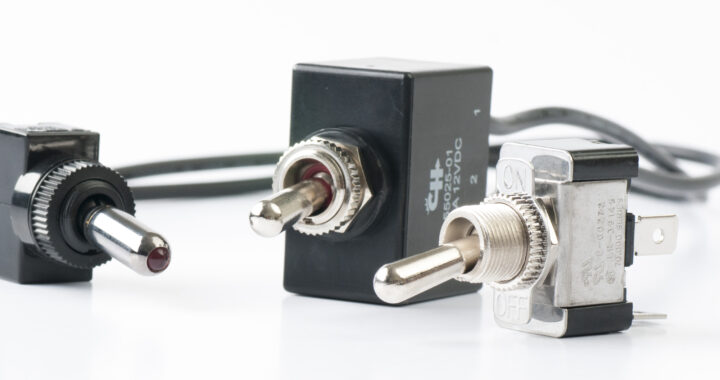When working with 12V electrical systems—whether in a custom car build, an off-grid solar project, or an industrial control panel—choosing the right switch is more than just picking something that looks good on the dash. Two of the most common types you’ll run into are single pole and double pole switches. Understanding the difference can help you wire smarter and safer.
Single Pole Switches (SPST or SPDT)
A single pole switch is the simplest and most common type you’ll find in 12V setups.
- How it works: Controls a single circuit—either sending power or cutting it off.
- SPST (Single Pole Single Throw): Think of this as a basic ON/OFF switch. Flip it, and you open or close one path for current.
- SPDT (Single Pole Double Throw): This version lets you switch between two outputs, commonly used for toggling between two light modes or relays.
- Use case: Turning on lights, fans, fuel pumps, or accessories from a single location.
Why choose it?
It’s simple, affordable, and does exactly what most of us need: power something on or off from one spot.
Double Pole Switches (DPST or DPDT)
A double pole switch is like two single pole switches operated by the same lever. It controls two separate circuits simultaneously.
- How it works: Has two sets of contacts that open or close together. Ideal for isolating power to multiple components.
- DPST (Double Pole Single Throw): Turns two circuits ON or OFF together.
- DPDT (Double Pole Double Throw): Can switch two circuits between two outputs. Often used in motor control to reverse polarity (e.g., raising/lowering actuators or window regulators).
- Use case: Switching both power and ground, managing dual battery systems, or reversing motor direction.
Why choose it?
In 12V projects, double pole switches give you more flexibility—especially when you need to manage more than one power line or control polarity.
Key Differences at a Glance:
| Feature | Single Pole Switch | Double Pole Switch |
|---|---|---|
| Circuits Controlled | 1 | 2 |
| Terminals | 2 or 3 | 4 or 6 |
| Typical Use | Lights, accessories, relays | Polarity reversing, dual systems |
| Common Labels | ON/OFF, A/B | ON/ON, ON/OFF/ON |
| Polarity Control | Not usually | Often used for reversing |
Examples of Single & Double Pole Switches in Use
- Single Pole Use:
- Toggle a 12V LED bar on your dashboard with a simple ON/OFF rocker.
- Fan ON/OFF switch
- Rocker switch for dome/underglow light
- High/Low beam toggle (manual)
- Double Pole Use:
- Reverse the direction of a 12V linear actuator in a DIY lift gate using a DPDT switch.
- Simultaneous power for dashcam and GPS
- Reverse polarity for lift arms
- Momentary DPDT for winch IN/OUT
Pro Tip:
In automotive and 12V scenarios, always check the amperage rating of the switch, not just the voltage. A 12V switch rated for 5 amps won’t survive long in a circuit pulling 20 amps—especially with inductive loads like motors or pumps.
Bottom Line
If your goal is to switch one thing on or off, go with a single pole switch. But if you’re managing two circuits, reversing polarity, or isolating multiple connections, a double pole switch is the better tool for the job.
